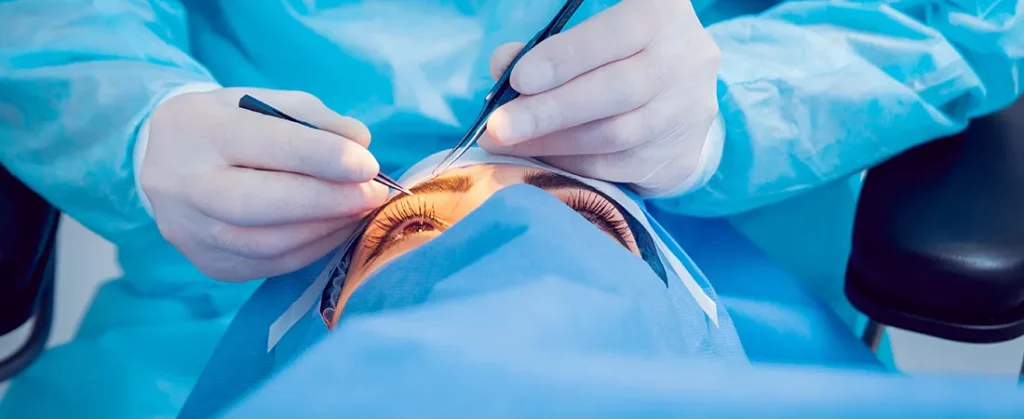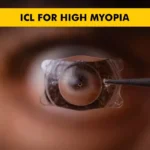What Is Laser Cataract Surgery?
Laser cataract surgery is an advanced, minimally invasive procedure that removes cataracts using precision laser technology. Cataracts occur when the natural lens of the eye becomes cloudy, leading to blurred vision, difficulty in seeing at night, and an overall decline in visual clarity. If left untreated, cataracts can cause severe vision impairment, affecting daily activities like reading, driving, and recognizing faces.
Laser cataract surgery differs from traditional methods by incorporating laser-assisted techniques that enhance accuracy, reduce surgical risks, and improve overall outcomes. This procedure allows ophthalmologists to remove cataracts with minimal trauma to surrounding eye tissues, making it a preferred option for many patients seeking effective vision restoration.
How Does Laser Cataracts Surgery Work?
Laser cataract surgery is a multi-step procedure that ensures precise removal of the cataract and the replacement of the natural lens with an artificial intraocular lens (IOL). The process involves:
Pre-Surgical Assessment
- Before surgery, a detailed eye examination is conducted to assess the severity of the cataract and determine the appropriate type of IOL for the patient.
- Advanced imaging techniques, such as Optical Coherence Tomography (OCT), create a high-resolution eye map to guide the laser’s accuracy.
- The ophthalmologist evaluates any pre-existing eye conditions that might affect the surgery’s success.
Laser-Assisted Incision
- A femtosecond laser creates precise corneal incisions, ensuring minimal disruption to surrounding tissues.
- The laser also softens and fragments the cataract, making it easier to remove without excessive ultrasound energy, which can sometimes cause corneal damage.
Cataract Removal and Lens Replacement
- Once the cataract is broken down into smaller pieces, it is carefully extracted using suction or ultrasound-assisted phacoemulsification.
- An intraocular lens (IOL) is then inserted into the eye, replacing the natural lens and restoring clear vision.
- The type of IOL used depends on the patient’s vision needs and lifestyle preferences. Options include monofocal, multifocal, and toric lenses.
Who Is Eligible for Laser Cataract Surgery?
Not all cataract patients require or qualify for laser-assisted surgery. It is best suited for individuals who:
- Have moderate to severe cataracts that significantly impact daily life.
- Do not have severe corneal diseases or other eye conditions that could interfere with the procedure.
- Prefer a more precise and potentially gentler surgical option with reduced recovery time.
Patients with pre-existing eye conditions, such as glaucoma or severe dry eye syndrome, should discuss alternative treatment options with their ophthalmologist to determine the best course of action.
Benefits of Laser Cataract Surgery
Laser cataract surgery offers several advantages over traditional manual techniques, including:
High Precision and Accuracy
This advanced procedure leverages femtosecond laser technology to create more precise incisions than those made manually. The laser ensures circular and correctly positioned openings (capsulorhexis or lens capsule opening), improving overall surgical outcomes and enhancing lens alignment.
Blade-Free Procedure
Unlike traditional cataract surgery, which involves manual instruments like blades and needles, laser-assisted surgery eliminates the need for handheld cutting tools. The laser efficiently fragments the cataract, creating a smaller incision for lens removal, reducing the risk of infection and complications.
Faster and Smoother Recovery
Laser-assisted surgery is typically less traumatic for the eye, which may lead to a more comfortable post-operative experience. With reduced inflammation and minimal manual handling of delicate tissues, many patients find that recovery is smoother and quicker, allowing them to resume daily activities sooner, provided they follow post-surgical care instructions.
Enhanced Vision Correction
One of the key benefits of laser cataract surgery is its ability to address pre-existing astigmatism during the procedure. With astigmatism correction modules, surgeons can reshape the cornea and optimize vision outcomes, reducing the patient’s dependence on corrective eyewear post-surgery.
Risks and Considerations
Although laser cataracts surgery is a highly advanced and safe procedure, it is important to be aware of potential risks, including:
- Temporary eye discomfort or sensitivity to light.
- Mild swelling or inflammation, which can be managed with prescribed eye drops.
- Slightly higher cost compared to traditional cataract surgery, which all insurance plans may not cover.
- Rare complications, such as retinal detachment or infection, are generally preventable with proper post-operative care.
Post-Surgical Recovery and Care
Post-Surgical Recovery and Care
- Patients may experience mild blurriness or discomfort immediately following the procedure, which typically resolves within a few days.
- It is essential to wear protective eyewear or an eye shield while sleeping to prevent accidental rubbing.
Healing Process
- Vision usually improves gradually over the first few days to weeks, with complete recovery occurring within a month.
- Patients should avoid strenuous activities, heavy lifting, and swimming for at least a week after surgery.
- Regular use of prescribed anti-inflammatory and antibiotic eye drops helps prevent infections and promotes healing.
Follow-Up Visits
- Regular follow-ups with the ophthalmologist ensure the eye is healing properly and that the intraocular lens is functioning as expected.
- Any unusual symptoms, such as persistent pain, sudden vision changes, or increased redness, should be reported immediately to the doctor.
Eye Cataract Laser Surgery Cost
The cost of laser cataract surgery can vary based on several factors, including:
- Location: Surgery costs differ depending on the country, city, or type of healthcare facility.
- Surgeon’s Experience: More experienced surgeons may charge higher fees.
- Type of Intraocular Lens (IOL) Used: Premium lenses such as multifocal or toric lenses increase the overall cost.
On average, laser cataract surgery costs more than traditional methods due to the advanced technology involved. Patients should check with their healthcare provider or insurance company to understand coverage options.
Conclusion
Laser cataract surgery is a revolutionary advancement in cataract treatment, offering enhanced precision, reduced trauma, and improved visual outcomes. While the procedure may be more expensive than traditional methods, its benefits make it a preferred option for many patients seeking reliable and effective cataract removal.
Restore Your Vision with Advanced Laser Cataracts Surgery Book Your Consultation Today!
FAQs
Laser removes the cataract and replaces the natural lens with an artificial one. While it does not “cure” cataracts, it effectively restores vision.
Many patients experience a smoother healing process due to reduced inflammation, but overall recovery time is similar to traditional cataract surgery.
Laser-assisted surgery enhances precision, reduces trauma to the eye, and improves post-surgical visual outcomes.
Costs vary depending on location, surgeon expertise, and the type of intraocular lens used. It is advisable to consult with an ophthalmologist for exact pricing.





